Débitmètres à pression différentielle
Principes de fonctionnement des différents débitmètres à pression
Les débitmètres à pression différentielle mesurent le débit des fluides en détectant la chute de pression au niveau d'un étranglement ou d'un élément primaire dans la voie d'écoulement. Ce rétrécissement peut prendre la forme d'une plaque à orifice, d'un tube de Venturi, d'une buse d'écoulement, d'un tube de Pitot ou d'un cône en V. Le principe de fonctionnement des débitmètres à pression différentielle repose sur les éléments suivants L'équation de BernoulliLa pression statique, la pression de vitesse et la hauteur d'élévation d'un fluide en circulation sont constantes. Lorsqu'un fluide s'écoule dans un tuyau et rencontre une restriction (comme une plaque d'orifice, un tube de Venturi ou un cône en V), sa vitesse augmente et la pression statique diminue. La réduction de la pression est directement proportionnelle au carré de la vitesse du fluide.
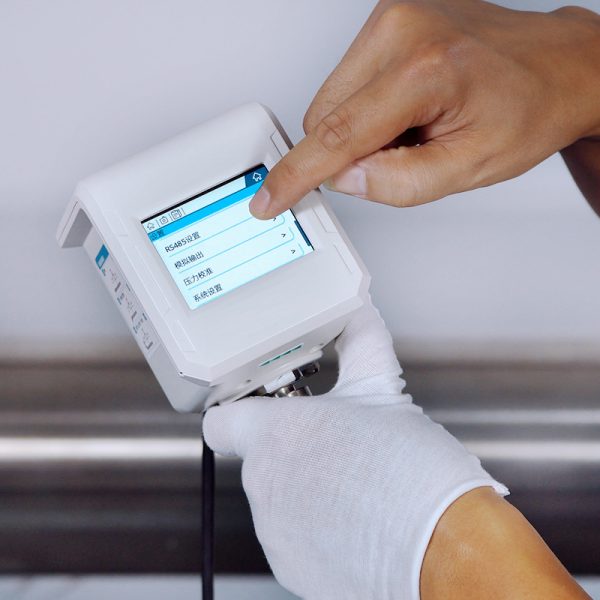
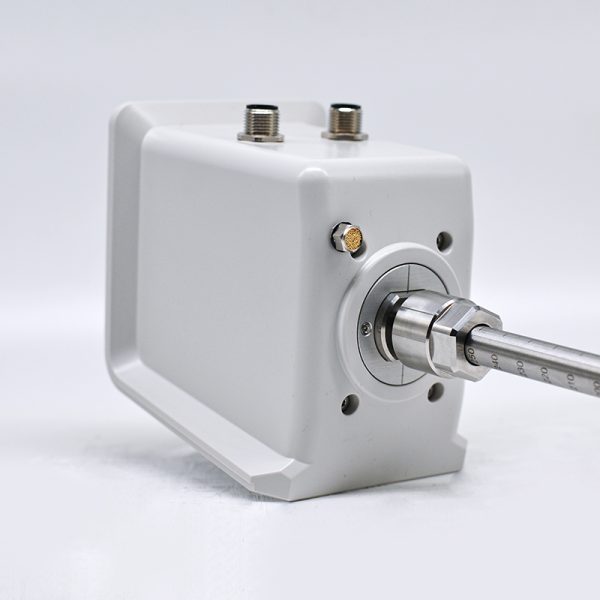
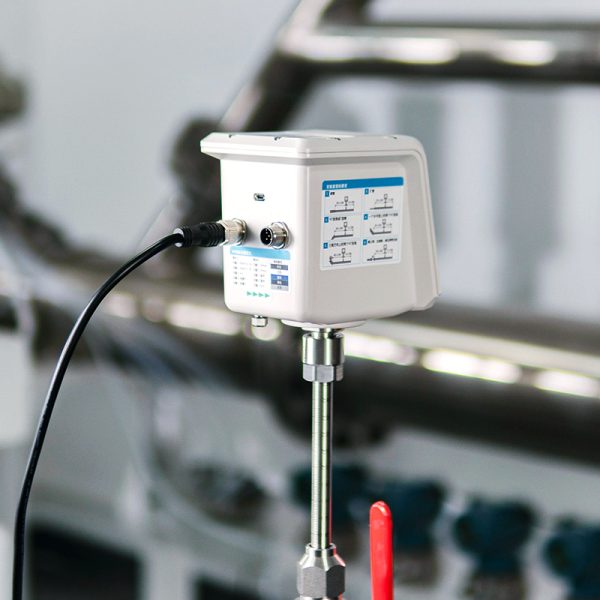
Débitmètre de gaz à tube de Pitot MTKB-201x
SKUMTKB-201x
Précision
±1% RD ; ±1.5% RD + 0.3% FS
Gamme de température moyenne
standard : -40 à 150 °C (-40 à +302 °F)
Pression max. Pression de traitement
17 bar (246.56 psi)
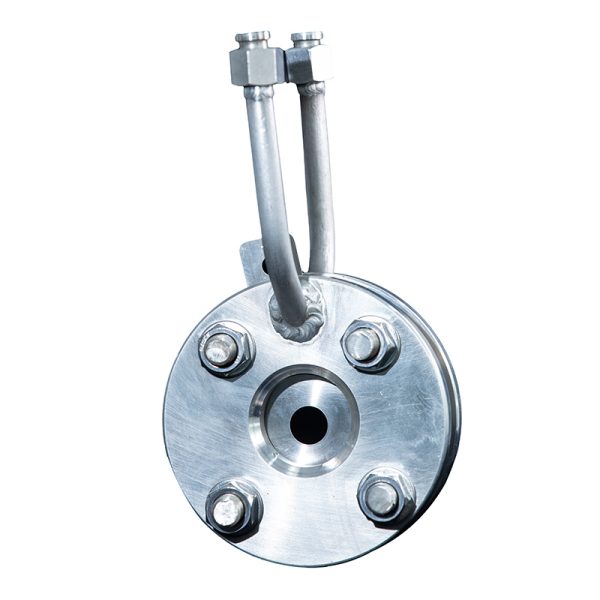
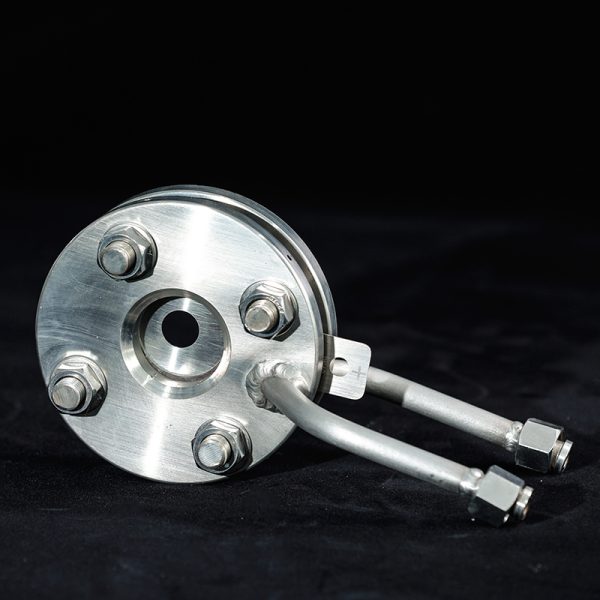
Débitmètre à plaque à orifice (MTKB-O)
SKUMTKB-O
Précision
±0,075%
Gamme de température moyenne
standard : -40 à 850 °C (-40 à +1562 °F)
Pression max. Pression de traitement
400 bar (5801.52 psi)
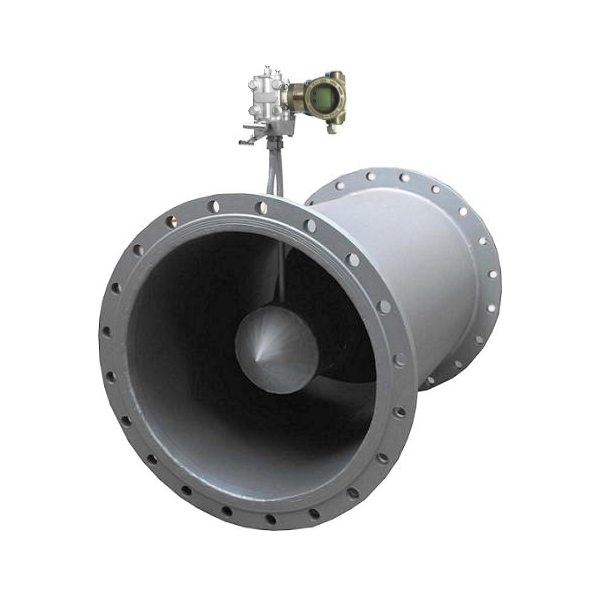
Débitmètre à cône à pression différente (MTKB-V)
SKUMTKB-V
Précision
±0,5%
Gamme de température moyenne
standard : -40 à 850 °C (-40 à +1562 °F)
Pression max. Pression de traitement
420 bar (6091.6 psi)
Types courants de débitmètres à pression différentielle.
Il existe plusieurs types de débitmètres à pression différentielle, chacun étant conçu pour des applications et des conditions de fonctionnement spécifiques. Les types les plus courants sont présentés ci-dessous :
Débitmètres à orifice:
- Principe: Un débitmètre à plaque à orifice se compose d'une plaque plate avec un trou à arêtes vives au milieu. Lorsque le fluide s'écoule à travers l'orifice, le flux se resserre et la vitesse augmente, ce qui crée une chute de pression. La différence de pression en amont et en aval de la plaque à orifice est mesurée pour calculer le débit.
- Avantages: Conception simple, faible coût et facilité d'installation et de remplacement.
- Inconvénients: Perte de pression permanente élevée due au rétrécissement du flux ; nécessite un entretien régulier pour garantir la précision, en particulier dans les applications sales ou corrosives.
Débitmètres Venturi:
- Principe: Un tube de Venturi a une gorge qui se rétrécit progressivement suivie d'une section qui s'élargit progressivement. Lorsque le fluide s'écoule à travers le rétrécissement, sa vitesse augmente, ce qui entraîne une chute de pression proportionnelle au débit.
- Avantages: Faible perte de pression, haute précision et adapté à la mesure des fluides visqueux.
- Inconvénients: Taille plus importante et coût plus élevé par rapport aux plaques à orifice ; difficile à installer dans des espaces restreints.
Buse de débit Débitmètres:
- Principe: Semblable au tube de Venturi mais de conception plus simple, la buse d'écoulement présente une section lisse et convergente qui débouche sur un col où la pression différentielle est mesurée.
- Avantages: Haute précision, convient aux flux à grande vitesse et est moins sensible à l'usure.
- Inconvénients: Perte de pression modérée, moins de possibilités par rapport aux tubes Venturi.
Tubes de Pitot:
- Principe: Les tubes de Pitot mesurent la vitesse d'écoulement des fluides en convertissant l'énergie cinétique du fluide en énergie potentielle. La différence entre la pression statique et la pression totale (stagnation) est utilisée pour calculer la vitesse d'écoulement.
- Avantages: Conception simple, faible coût, perte de pression minimale et facilité d'installation.
- Inconvénients: Moins précis pour les flux turbulents ; sensible à l'alignement et nécessite des nettoyages fréquents.
Débitmètres à cône en V:
- Principe: Le débitmètre à cône en V est un type unique de compteur de pression différentielle qui utilise une obstruction en forme de cône au centre de la conduite. Le cône remodèle le profil de vitesse et stabilise l'écoulement du fluide, créant une pression différentielle qui peut être mesurée pour déterminer le débit.
- Avantages: Haute précision et répétabilité ; faible perte de pression permanente ; moins de sensibilité aux perturbations du débit ; nécessite un minimum de tuyauterie en ligne droite.
- Inconvénients: Coût initial plus élevé que les plaques à orifice traditionnelles ; l'installation peut nécessiter une formation spécialisée.
Tuyauterie sous pression différentielle, installation et maintenance
Les performances et la précision des débitmètres à pression différentielle dépendent fortement d'une installation correcte, de la configuration de la tuyauterie et d'un entretien régulier.
- Exigences en matière de tuyauterie: Les débitmètres DP nécessitent des conduites droites en amont (généralement 10 diamètres) et en aval (5 diamètres) de l'élément d'écoulement afin de garantir un profil d'écoulement entièrement développé. Une tuyauterie droite inadéquate peut entraîner des relevés inexacts.
- Considérations relatives à l'installation: Les débitmètres à pression différentielle doivent être installés dans un endroit où les perturbations du débit sont réduites au minimum. Ils doivent être placés à l'écart des coudes, des vannes et autres raccords perturbant l'écoulement. Les prises de pression doivent être propres, correctement alignées et non obstruées.
- Maintenance Pratiques: Une inspection, un étalonnage et une maintenance réguliers sont essentiels pour maintenir la précision des débitmètres DP. Les plaques à orifice, les buses et les autres éléments primaires doivent être contrôlés pour vérifier l'absence d'usure, de corrosion ou d'accumulation de débris. L'étalonnage doit être effectué périodiquement pour s'assurer que la mesure se situe dans la plage de précision spécifiée.
Applications des débitmètres à pression différentielle
En raison de leur polyvalence et de leur fiabilité, les débitmètres à pression différentielle sont utilisés dans diverses industries, notamment :
- Pétrole et gaz: Pour mesurer le débit de pétrole brut, de gaz naturel, de vapeur et d'autres fluides de traitement dans les pipelines et les raffineries. Les plaques à orifice et les compteurs à cône en V sont particulièrement appréciés dans ces applications en raison de leur capacité à mesurer des pressions élevées.
- Traitement de l'eau et des eaux usées: Utilisés pour mesurer le débit d'eau, de produits chimiques et de boues dans les stations d'épuration et les réseaux de distribution. Les tubes Venturi et les buses d'écoulement sont des choix courants dans ces contextes en raison de leur faible perte de pression et de leur grande fiabilité.
- Production d'électricité: Utilisés pour mesurer le débit de vapeur dans les chaudières, l'eau d'alimentation dans les turbines et d'autres fluides essentiels au fonctionnement des centrales électriques. Les compteurs à tube de Venturi et à plaque d'orifice sont couramment utilisés dans ces applications.
- Industries chimiques et pétrochimiques: Utilisé pour mesurer le débit de produits chimiques corrosifs et toxiques, de fluides à haute température et d'autres flux de processus. Le débitmètre à cône en V est particulièrement avantageux dans ces conditions en raison de sa conception robuste et de sa faible maintenance.
- Systèmes CVC: Utilisés pour mesurer le débit d'eau et d'air dans les systèmes de chauffage, de ventilation et de refroidissement. Les tubes de Pitot et les débitmètres annubaires sont souvent utilisés en raison de leur faible chute de pression et de leur facilité d'installation.
- Alimentation et boissons: Utilisés pour mesurer le débit d'eau, de lait, de sirops et d'autres ingrédients dans les usines de transformation. Les compteurs Annubar et Venturi sont souvent choisis pour leur conception sanitaire et leurs capacités de mesure précise du débit.
Débitmètres de gaz | Débitmètres d'huile | Pitot Tube Flow Meters | Flow Meter Controllers | Débitmètres à effet Coriolis | Débitmètres à vortex | Débitmètres de gaz à ultrasons | Débitmètres massiques thermiques | Débitmètres à turbine | Débitmètres magnétiques | Rotamètres
